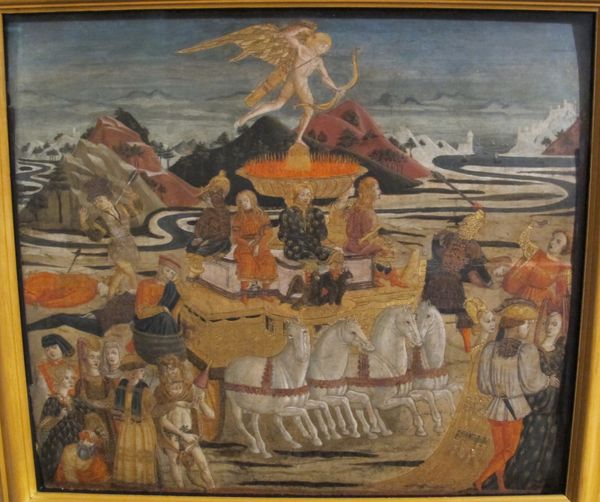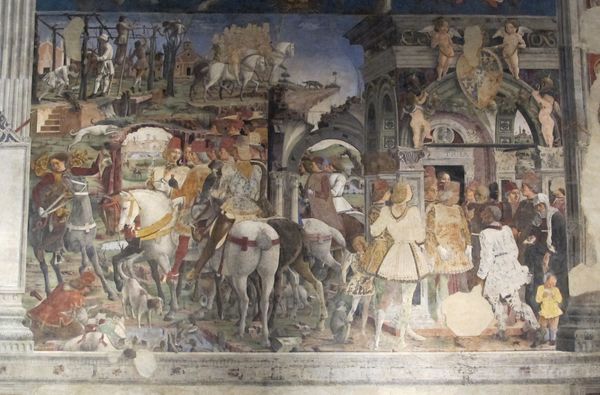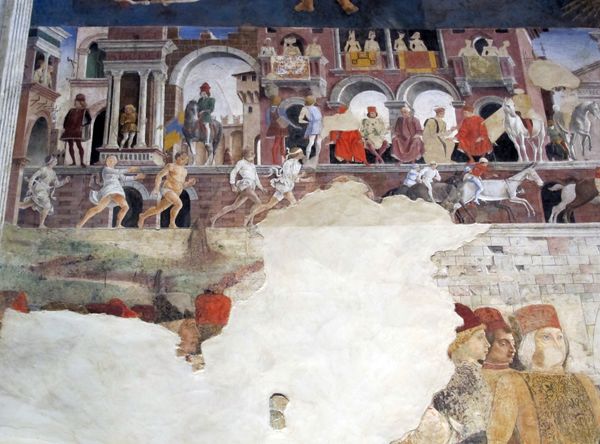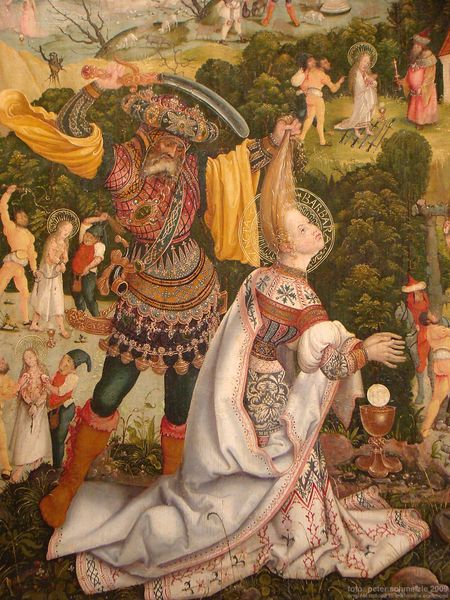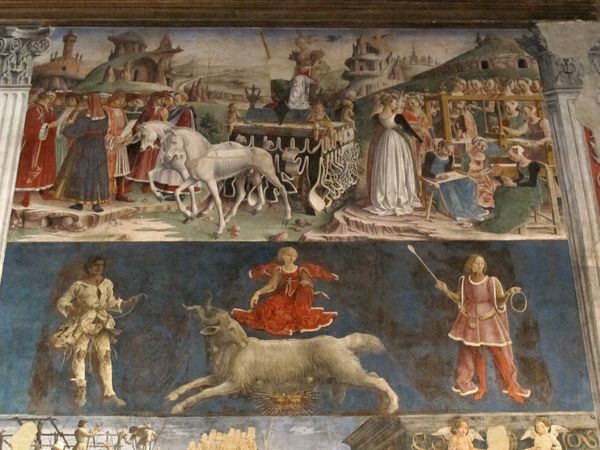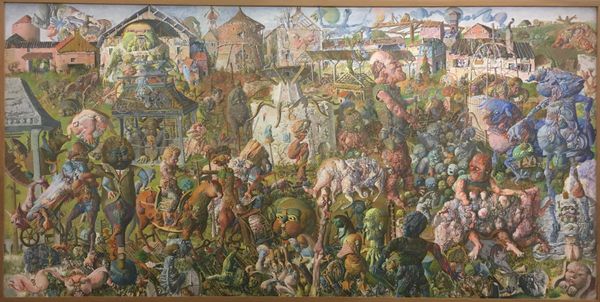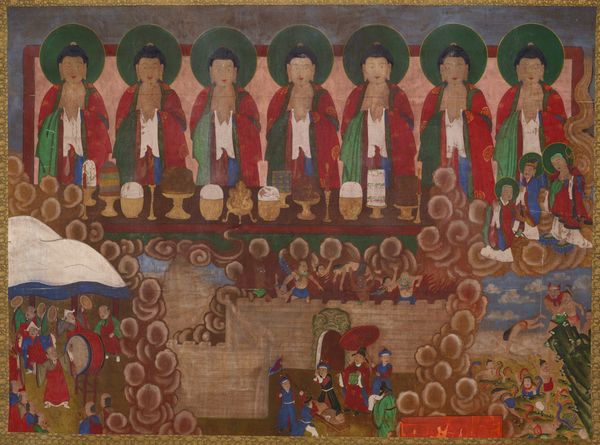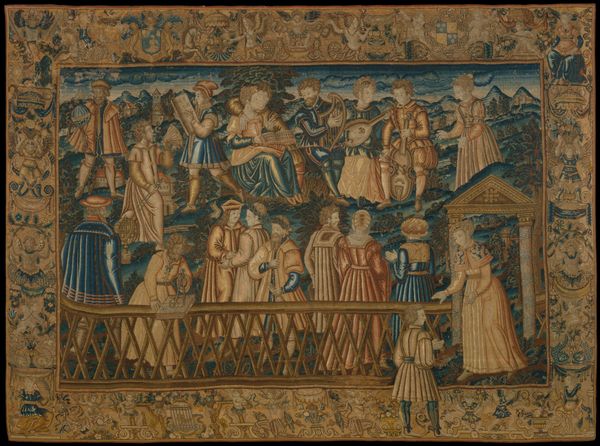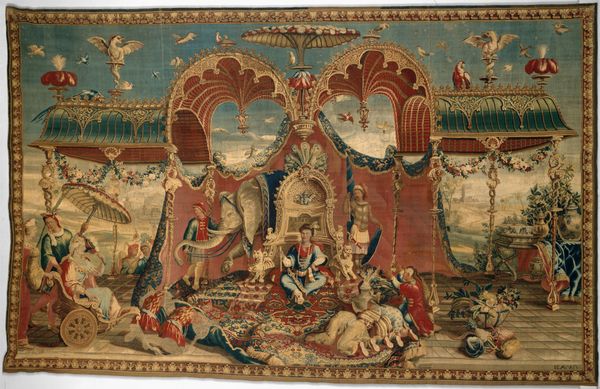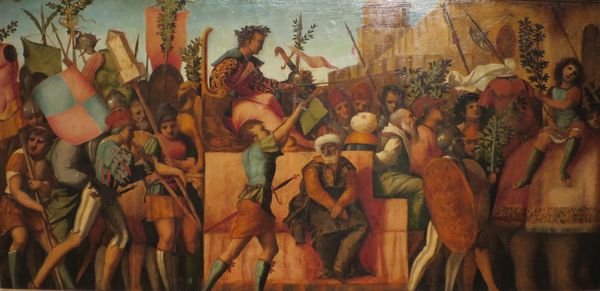
panel, tempera, painting
#
panel
#
allegory
#
tempera
#
painting
#
oil painting
#
history-painting
#
academic-art
#
italian-renaissance
Copyright: Public domain
Curator: Immediately striking, isn’t it? This Italian Renaissance panel painting radiates an almost dreamlike quality, a processional scene rendered in soft colors with touches of shimmering gold leaf. Editor: The dreamlike quality, I think, comes from its inherent contradictions. This celebratory image, purportedly titled "Triumph of Chastity" by Lo Scheggia seems laden with performative symbolism and an odd, almost sterile energy, wouldn't you agree? What social and historical forces do you feel are at play here? Curator: Well, Lo Scheggia, a painter working in Florence, was deeply embedded in the cultural and intellectual currents of his time. Think about the socio-political position of women, which depended in significant ways on her alleged chastity and moral restraint. That period experienced enormous growth in how it expressed that societal structure. Consider how such allegorical works acted within the sphere of power at the time and served the needs of powerful elites? Editor: It’s impossible to ignore the ways in which the idea of “chastity” was used to control and confine women, of course, the visual narrative further complicates matters. There's the figure, perhaps Chastity herself, atop a triumphal car pulled by what looks like… lions? While around the chariot, an assortment of figures—likely representing virtues—dance and celebrate. How do you see this tableau serving the gendered and intersectional politics of its time? Curator: We could read those lions as symbols of tamed passion, right? Conquered by the virtuous woman, by chastity. And the act of celebrating Chastity publicly certainly underscores its perceived societal importance at the time, emphasizing that women were required to be modest at all times. Editor: Agreed. But it also reinforces an art history narrative dominated by, in many ways, power dynamics. We often glorify works created for elite, influential circles without considering their broader social effects and if there is anything genuinely 'liberating' in them at all. Do you see any modern-day correlations? Curator: Today, the ways women's bodies are still scrutinized and legislated are just reflections of that history. Looking at art like this gives us an opportunity to confront these ongoing societal challenges directly, in new ways. Editor: Precisely. It allows us to engage in a continuous dialogue about image-making and power. A complex topic for our listeners. Curator: But a vitally important one.
Comments
No comments
Be the first to comment and join the conversation on the ultimate creative platform.
